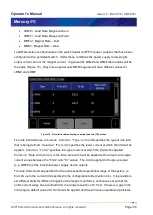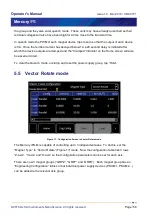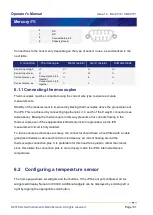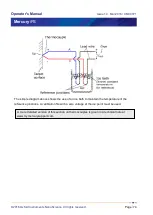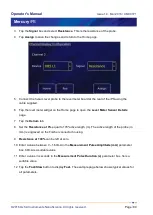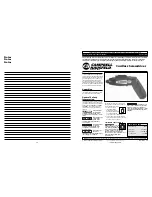
Operator's Manual
Issue 14
/
Mar 2016 / UMC0071
Mercury
iPS
©2016 Oxford Instruments NanoScience. All rights reserved.
Page
65
6.4 Using a generic calibration-file
6.4.1 Overview
Some generic calibration files are supplied for common sensors having reasonably predictable
forms of measured variable (e.g. resistance) as a function of temperature, for example sensors
that conform to the ITS-90 standard. However, the response of an individual sensor may
deviate slightly from the standard curve.
If two known temperatures are available, it is possible to make small adjustments to the scale
and offset of the standard curve to match a particular sensor. This process can be used for PTC
and NTC sensors.
The adjustment is applied to the measured variable, so for a resistance sensor the adjustment
is applied to the measured resistance.
For best results, the scaling adjustment should be applied at the high-value end of the measure
variable and the offset at the low-value end. So for a NTC resistance sensor, apply the scaling
at the known low-temperature point (ideally near the high-resistance end of the range). If a
scale adjustment of more than a few percent is required to correct the temperature reading,
investigate the measurement set-up to check there is not some other error present.
Once the scaling adjustment has been made, change to the low-value parameter end of the
range and make the offset adjustment (for an NTC resistance sensor, this is a high-temperature
point). Again, this should be a small adjustment. As these adjustments are not independent, re-
check the high-value parameter point after the offset has been adjusted. A few iterations of
these adjustments may be required to achieve the desired accuracy.
6.4.2 Adjusting a generic calibration file
You need a method of maintaining the temperature sensor at two known temperatures (T1 and
T2) to perform this calibration. This procedure calibrates the sensor for temperatures between
these two known values by applying scale and offset corrections. The calculated correction
parameters will be applied to every reading of this sensor but will not be applied to any other
sensor in the system, even sensors of the same type using the same generic calibration curve.
For this procedure, T1 produces a lower sensor-resistance than T2:
For a PTC sensor, T1<T2





